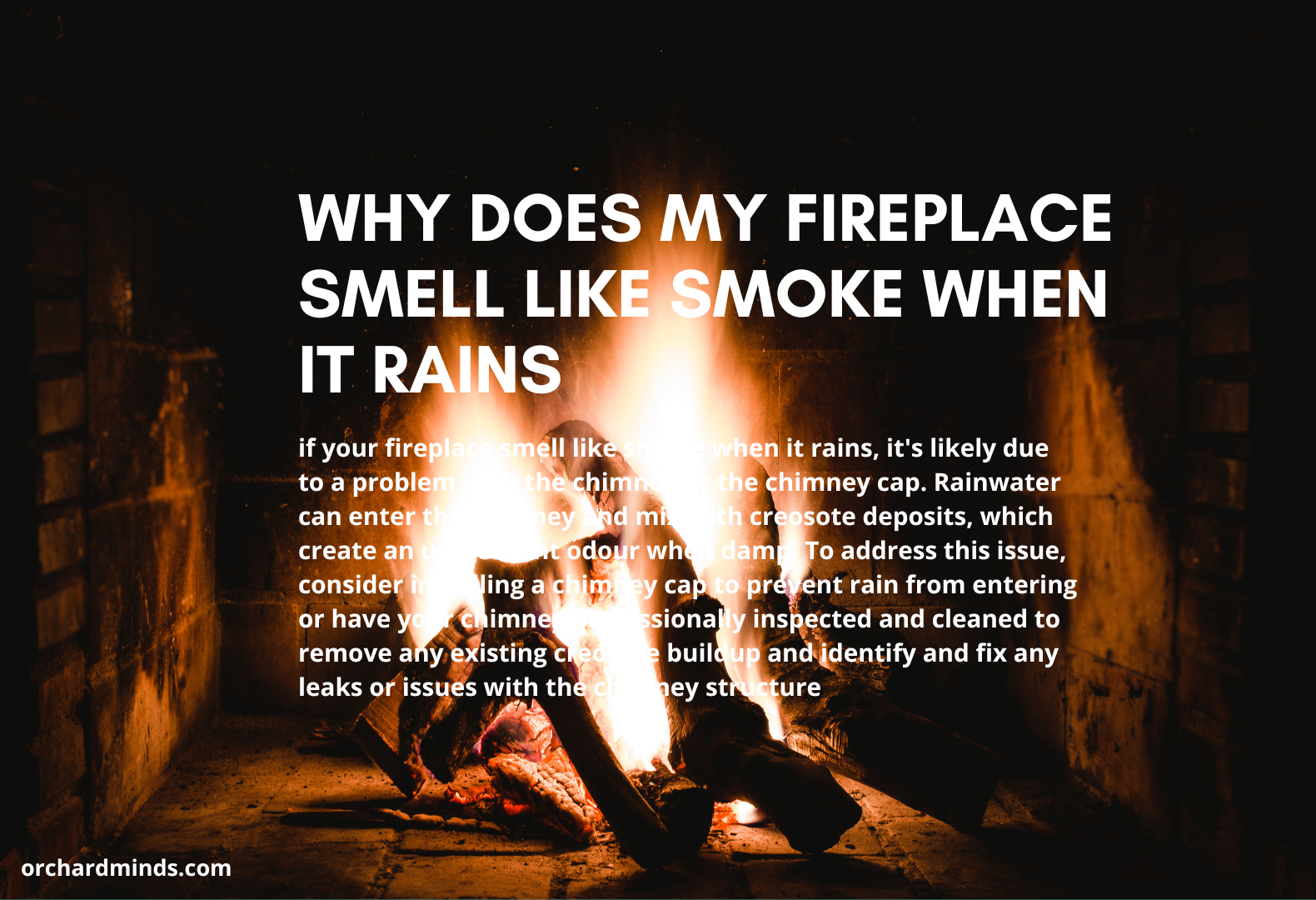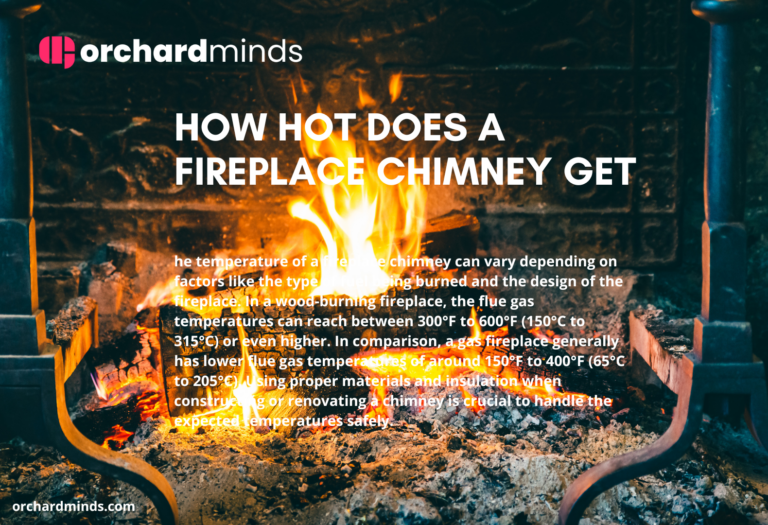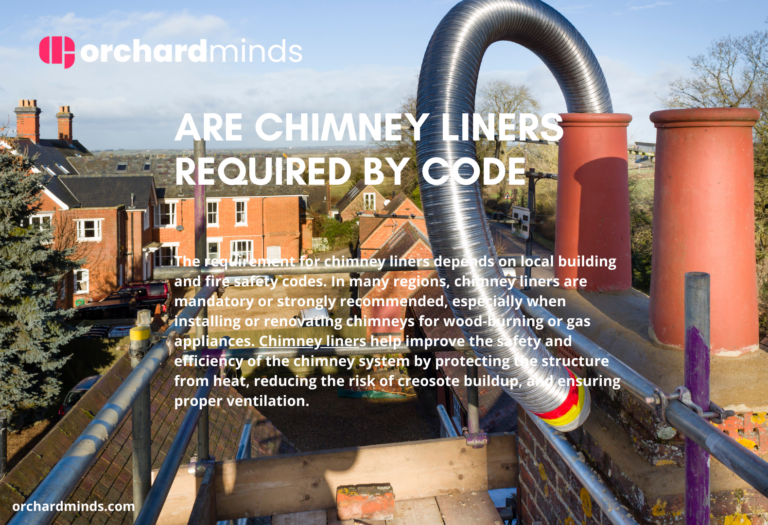If there is a smoky smell coming from the fireplaces whenever it rains, there is probably something wrong with either the chimney or the cap of it. With rainwater seeping inside it, it will mix up with the residues deposited by creosote, emanating a bad smell whenever damp. You will need to have a chimney cap installed to prevent the entry of rain, or you should consider a professional cleaning and inspection of your chimney to ensure that no creosote builds up after the long months of burning, and that all leaks and allowances are fixed.
The Reason Your Fireplace Stinks
A stinking fireplace can be due to an array of reasons. It does become a common problem, either due to creosote build-up, which is normally released into the chimney and creates a very strong smell when mixed with the hot air during fire burning, but moistness can also be another reason, as it can combine with soot and give off a musty smell. When ventilation is poor within the room, smoke and odors may linger, also the wrong types of wood like green and resinous wood may result in noxious fumes. Odors in the fireplace can be prevented by regular cleaning, choosing the right kind of wood, and proper ventilation.
How to Get Rid of Fireplace Smell
Here are some valuable tips on eliminating fireplace smells and keeping the indoor atmosphere fresh:
Regular Chimney Cleaning: Make sure that you have at least one chimney cleaning per year. A professional chimney sweep does a far better job of cleaning your chimney, plus further removes any creosote buildup. That is one of the most common sources of smells from fireplaces. When wood is first burned, it creates creosote, which gives off a smell similar to tar if present within a chimney.
Correct Choice of Firewood: Only seasoned and dry firewood should be fed to the flame. Green or fresh wood will hold more moisture, which again adds up to produce excessive smoke and foul odors. Hardwoods like oak and maple generally burn cleaner with less odor than softwoods.
Good airflow: There should be adequate ventilation to ensure that there is no retention of smoke and odor within the room. Open a window slightly or adjust the damper; make sure one has a good flow, which would enable the smoke to be drawn up the chimney.
Install a Chimney Cap: This may help to block rainwater and unwanted critters—two common sources of chimney odors—from entering your chimney.
Small, Hot Fires: Provided that the fire is small and hot, it will produce less smoke and fewer odors. Use smaller logs and position the wood in the fireplace to achieve an even burn of all the wood on each log.
Use Fire Starters: You can also use fire starters or kindling to quickly get your fire started, to then lead into cleaner combustion with fewer odors.
Clean the firebox—After a fire, rake out the embers and ashes from the firebox. Ashes may act as an insecure material responsive for stale odors. Remove ash in a metal container and keep the ash well away from the house until it cools down. Clean the grate and around it: Wipe the fire grate and surroundings to prevent soot and ash from accumulating. It helps in keeping a good freshness of air in your living room.
Neutralize Odors: If you have remaining odors inside the parameters of the fireplace, add odor-absorbing materials like activated charcoal, baking soda, or any of those fireplace odor eliminators found in stores on the sides of the fireplace. Such can either absorb or eliminate any remaining smell.
Properly seal the damper: Close the damper completely when you’re not using your fireplace. This helps prevent a cold draft and eliminates outside odors from entering your home.
Checking for Animal Nests: Animals sometimes make nests inside chimneys and can obviously cause terrible stenches. When this occurs, it really is an issue best dealt with by a professional to remove the nest and fit a chimney cap to prevent it from occurring again.
Keep a Clean and Dry Chimney: Be sure to keep your chimney and fireplace area clean and dry. If there is a lot of dampness, it could be the cause of musty, foul odors. You can even run a dehumidifier in the room if you have excess moisture in the air.
Too Much Moisture in Your Chimney
Excessive moisture in your chimney can lead to musty odors and even structural damage over time. Moisture can enter through gaps or cracks, especially if your chimney is not adequately sealed. To address this issue, ensure proper chimney sealing, fix any leaks or gaps, and consider using a chimney cap to prevent rain and snow from entering.
Soot and Creosote Build Up
Soot and creosote buildup in the chimney can produce strong, acrid odors. Regular chimney cleaning by a professional is essential to remove these combustible deposits. Creosote is highly flammable and poses a significant fire hazard, so keeping it under control is vital for safety as well as odor prevention.
Leaves Are in Your Chimney
Leaves and debris in your chimney can create blockages, restricting airflow and causing unpleasant smells. Regularly inspect the chimney, especially before the heating season, to ensure it’s free of obstructions. Installing a chimney cap can help prevent leaves and debris from entering in the first place.
The Odors of Soot, Creosote, and Polycyclic Aromatic Hydrocarbons
Soot and creosote are common byproducts of incomplete combustion in a fireplace or wood-burning stove. Soot consists of fine black particles and can produce a smoky, ashy odor. Creosote, on the other hand, is a flammable, tar-like substance that often accumulates in the chimney and can emit a strong, acrid smell. Proper maintenance and regular chimney cleaning are essential to reduce these odors and minimize fire hazards.
Polycyclic Aromatic Hydrocarbons (PAHs) are a group of chemical compounds that can form during the incomplete combustion of organic materials like wood or coal. They are known to be carcinogenic and can produce a distinct, often unpleasant, chemical odor. Minimizing the release of PAHs requires efficient combustion and good airflow, which can be achieved by using well-seasoned wood and maintaining proper ventilation in your fireplace or stove. Additionally, burning at higher temperatures and avoiding smoldering fires can help reduce the production of PAHs and their associated odors.
The Unpleasant Scents of Clogged and Decaying Organic Matter
Clogged and decaying organic matter can emit a range of unpleasant scents, often associated with rot and decomposition. In the context of a home, such odors are typically related to clogged drains, garbage disposals, or neglected organic waste. These odors can be described as foul, putrid, or rancid. To address these scents, it’s important to clear the blockages causing the stagnation of organic material and dispose of decaying matter properly. Regular cleaning, proper waste disposal, and the use of drain cleaners or deodorizers can help eliminate these unpleasant odors and maintain a fresh indoor environment.
Fireplace Backdraft Due to Negative Air Pressure in the House
A fireplace backdraft can occur when the negative air pressure inside a house disrupts the proper airflow in the chimney, causing smoke and fumes to enter the living space rather than exiting through the chimney. Several factors can contribute to this issue, including exhaust fans, ventilation systems, or even strong wind gusts. To prevent fireplace backdrafts, it’s important to:
- Balance Ventilation Systems: Ensure that your home’s ventilation system, including exhaust fans and range hoods, is not creating excessive negative pressure. Properly balancing these systems can help maintain a neutral or slightly positive air pressure in the house.
- Open a Window: Crack a window open near the fireplace to allow fresh air to enter and compensate for the negative pressure. This can help establish a better airflow balance.
- Check the Damper: Make sure the damper is fully open when using the fireplace. A partially closed damper can restrict the chimney’s ability to draw air up and out.
- Install a Chimney Cap: A chimney cap can help prevent strong outdoor winds from causing backdrafts by blocking direct airflow into the chimney.
- Regular Maintenance: Keep your chimney clean to reduce obstructions that can affect airflow. Soot and creosote buildup can interfere with proper chimney function.
- Consider a Draft-Enhancing Solution: In some cases, installing a draft-enhancing chimney cap or an external combustion air supply can help improve fireplace draft, particularly in homes with persistent negative air pressure issues.




Leave a Comment